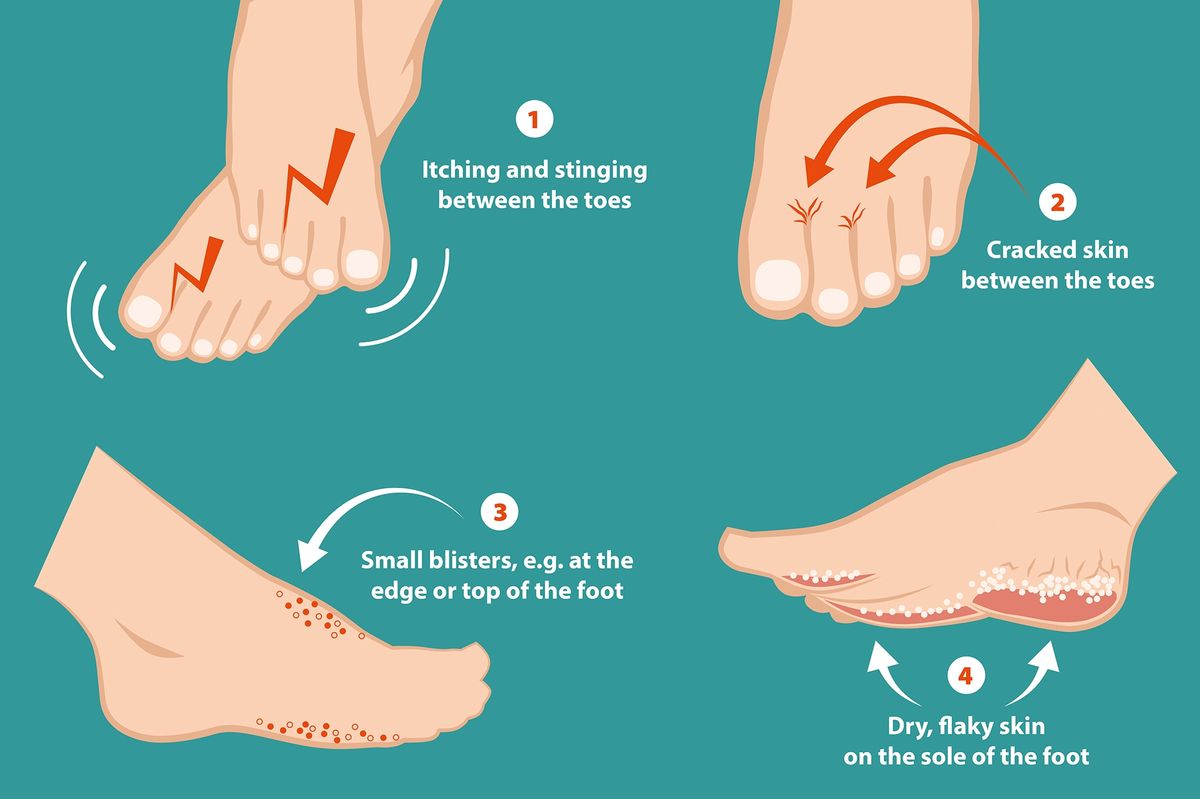Athlete's Foot Home Remedies

If you are suffering from athlete's foot, it's important to see a doctor for a diagnosis. In most cases, a physician can diagnose it by asking you about your symptoms and examining a small sample of the infected skin. Your doctor may perform laboratory tests or use a microscope to check for the presence of fungus. In mild cases, an over-the-counter antifungal cream will solve your problem, while severe cases may require prescription medicine.
Symptoms
Symptoms of athlete's foot are a combination of skin redness, warm to the touch, swollen, and pain. The foot may also develop red streaks. It is also possible to develop a secondary bacterial infection. If left untreated, this infection may spread to lymph nodes and the lymph system. If it is left untreated, this infection may lead to cellulitis, a more serious bacterial skin infection. Athlete's foot can be mistaken for other problems such as eczema and psoriasis.
While it can affect any part of the foot, it usually occurs on the space between the toes. Athletes' foot is caused by a type of fungus called tinea pedis, which grows in moist, warm areas such as feet. This fungus thrives on skin that is kept in tight shoes. Treatment for athlete's foot varies according to the severity of the condition, but typically involves the use of topical creams or oral medications.
Causes
Athlete's foot can be a common, contagious skin infection. It is spread through contact with infected skin or through objects contaminated with fungus. Pets can also be a source of the infection. Because fungus thrives in warm, moist environments, it can be spread to people who are barefoot or who walk barefoot in public places. The good news is that athlete's foot is treatable with over-the-counter antifungal drugs, which usually work within two weeks.
In the case of communal areas, it is advisable to wear plastic sandals or flip-flops to keep your feet dry. It is also advisable to keep your shoes clean and dry, and to apply antifungal creams or tablets if you've already contracted athlete's foot. The infection may spread to your toenails, which means long-term medication. You can also consult your doctor for further information about how to treat athlete's foot.
Treatments
While the majority of athletes experience the unpleasant symptoms of athlete's foot, you can also use home remedies. While antifungal medications are the standard of care, there are several over-the-counter options available. In more severe cases, however, you may need the help of a doctor. Homeopathic remedies include mild vinegar soaks, moist wicking socks, and sterile shoes. Listed below are several homeopathic treatments for athlete's foot.
Topical antifungal medications, including clotrimazole lotion, can be applied to the affected area twice a day. These medications are more powerful than the OTC products, but they can cause severe blistering and further irritation. Additionally, a healthcare provider may prescribe oral antifungal medication, which must be taken for several months. However, oral antifungals may damage the liver, and you should discuss your options with your doctor before taking them. Vicks is another topical antifungal that you can apply to the affected area. It should be applied to the affected area at least twice a day, and you should repeat it daily for about one month.
Prevention
Athlete's foot is caused by moist, warm environments. So, if you're prone to getting it, you should wear clean and dry shoes whenever possible. It is also beneficial to wear footwear made of porous materials, like canvas or leather. In addition, you should use socks to avoid moisture buildup on your feet. Finally, if you spend time in water, remove your shoes before entering your house. The moist and warm shoes may harbor fungus.
Despite the common myths, there are many ways to treat athlete's foot. If you don't know how to prevent the condition, visit your doctor for a proper diagnosis. A doctor can also prescribe fungicidal medicines or topical creams, as well as antibiotics if the infection is caused by bacteria. Although these treatments are effective, they may not be appropriate for everyone. Medications must be used with good hygiene and prevention methods, as the symptoms could recur.



